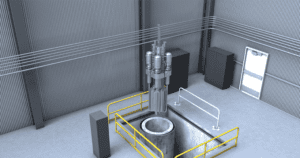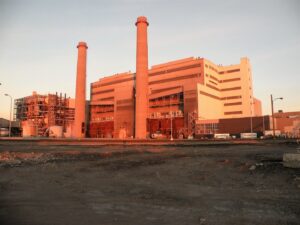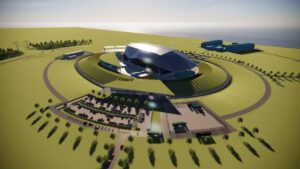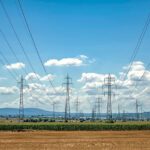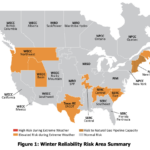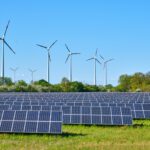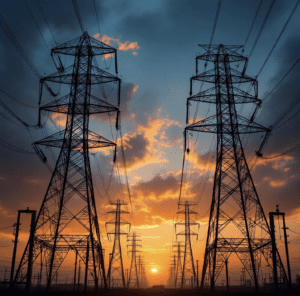
The summer of 2025 pushed the U.S. electric grid to its limits. A brutal heat dome swept across the East Coast, while a powerful derecho tore through the Midwest, leaving more than 28,000 homes and businesses without power in Iowa alone. Demand surged to record levels. Yet despite the pressure, the grid avoided major blackouts. Smarter, more flexible systems are beginning to deliver results, but the need for faster transformation is undeniable.
COMMENTARY
Official forecasts from the North American Electric Reliability Corp. (NERC), Federal Energy Regulatory Commission (FERC), and regional operators predicted tight conditions. They were right. In July, U.S. fossil fuel electricity generation hit a nine‑year high—290 terawatt hours (TWh).
This summer also underscored how central renewables are to grid resilience. Renewables supplied a record 44% of the nation’s power through the first seven months of 2025, and, according to Cleanview, 13.5 GW of new renewable generation in Texas slashed ERCOT’s blackout risk from 11% to less than 1%.
Meanwhile, longer-term trends show that renewables-heavy areas enjoy lower costs. Day-ahead electricity prices in ERCOT North fell nearly 50% between 2023 and 2024 with record-breaking solar output, despite continued load growth from data center expansion. This isn’t a coincidence—it’s the economics of zero marginal cost generation working exactly as intended.
Renewables and Demand Response Are Key to Grid Stability
More solar and storage capacity drives lower costs and better reliability. When the sun shines and batteries are charged, the marginal cost of electricity drops toward zero. When demand spikes, storage systems and flexible resources like demand response can respond faster than traditional power plants, providing the response that the modern grids need.
Across North America, demand response activity is reaching new highs—last summer, Enel North America’s demand response resources were dispatched 411 times, totaling almost 11,000 MWh for the grid, or nearly 1,700 hours. This year, we project a record 720 dispatches for the year. During some of the most extreme peak loads this summer, PJM deployed demand response resources to help reduce load by more than 4,000 MW. These dispatches aren’t signs of a failing grid. They’re evidence of a system that’s working smarter, using every available resource to balance supply and demand in real time.
The sophistication of today’s electricity customers is another game-changer. Data centers and other large digital operations, the very loads driving unprecedented demand growth, have the potential to be intelligent and dynamic grid participants. They understand electricity markets, can quickly adjust their operations based on price signals, and actively contribute toward grid stability, rather than just consume power. For example, Google recently signed demand response agreements with Indiana Michigan Power and Tennessee Power Authority for its AI data centers.
Economic Case is Still Strong
The economics of electricity markets are increasingly favoring smart, flexible approaches to grid management. Grid conditions, generation availability, weather conditions, and customer demand can change significantly and swiftly on an intra-day basis. Having tools available to the grid operator that can respond equally as fast as those changing conditions is key to maintaining stability.
While capacity constraints in some regions have led to higher wholesale prices, like in PJM, these conditions also drive investment in cost-effective solutions. Because of the lag in timing to bring new generation or new transmission online to meet demand growth, grid operators are turning to demand response and storage resources that can be added more quickly and provide reliability benefits at a fraction of the cost.
This shift creates real value for consumers. A single demand response event can provide similar grid benefits to a new peaking power plant while costing far less to deploy and maintain. Businesses participating in these programs can offset rising electricity costs by earning revenue for their flexibility, creating a win-win dynamic.
Smart energy users are discovering that operational flexibility has genuine economic value. A manufacturing facility that is available to reduce demand, even if only called upon for a few hours a year, earns payments for that availability. A data center that can shift computing loads based on grid conditions can take advantage of energy price variations between on-peak and off-peak pricing. These capabilities represent new revenue opportunities that didn’t exist in a centralized grid model.
A Cautionary Tale
While this summer demonstrated the resilience of our evolving grid, we shouldn’t be satisfied with scraping by. According to the Department of Energy, data center electricity demand could reach 12% of total U.S. consumption by 2028, up from about 4% today. This transition must be realized utilizing electricity resources that are flexible, dynamic and cost-effective.
The window for staying ahead of this growing demand curve is narrowing. Every month of delay in streamlining the interconnection process and building new transmission infrastructure makes the challenge harder. The alternative—relying primarily on fossil fuel generation—is often more expensive, slower to deploy, and can’t match the operational flexibility that modern grids require.
The past year proved that transition is possible almost everywhere: the grid can handle extraordinary demand if renewables, storage, and demand response scale together. In 2024, for the first time ever, the California ISO service area achieved 100% clean energy for a period of the day every three out of five days, without issuing a single emergency alert, while ERCOT managed record demand with lower prices.
Grid operators are already adapting to manage higher levels of renewable penetration, but they need the tools to succeed. That means storage to capture excess solar generation during the day and discharge it when the sun sets. It means more sophisticated demand response programs that can tap into the inherent flexibility of the technology sector and industrial operations. And it means transmission infrastructure that can move clean energy from where it’s generated to where it’s needed.
But we must continue to move quickly to meet rising demand. The data center boom isn’t slowing down, and neither should our progress toward a modern energy system. The grid of the future won’t look like the grid of the past. It will be more distributed, more flexible, and more intelligent. This summer showed what’s possible, but we need to keep building a resilient grid everywhere—fast.
—Marcus Krembs is head of External Relations and Sustainability at Enel North America.



